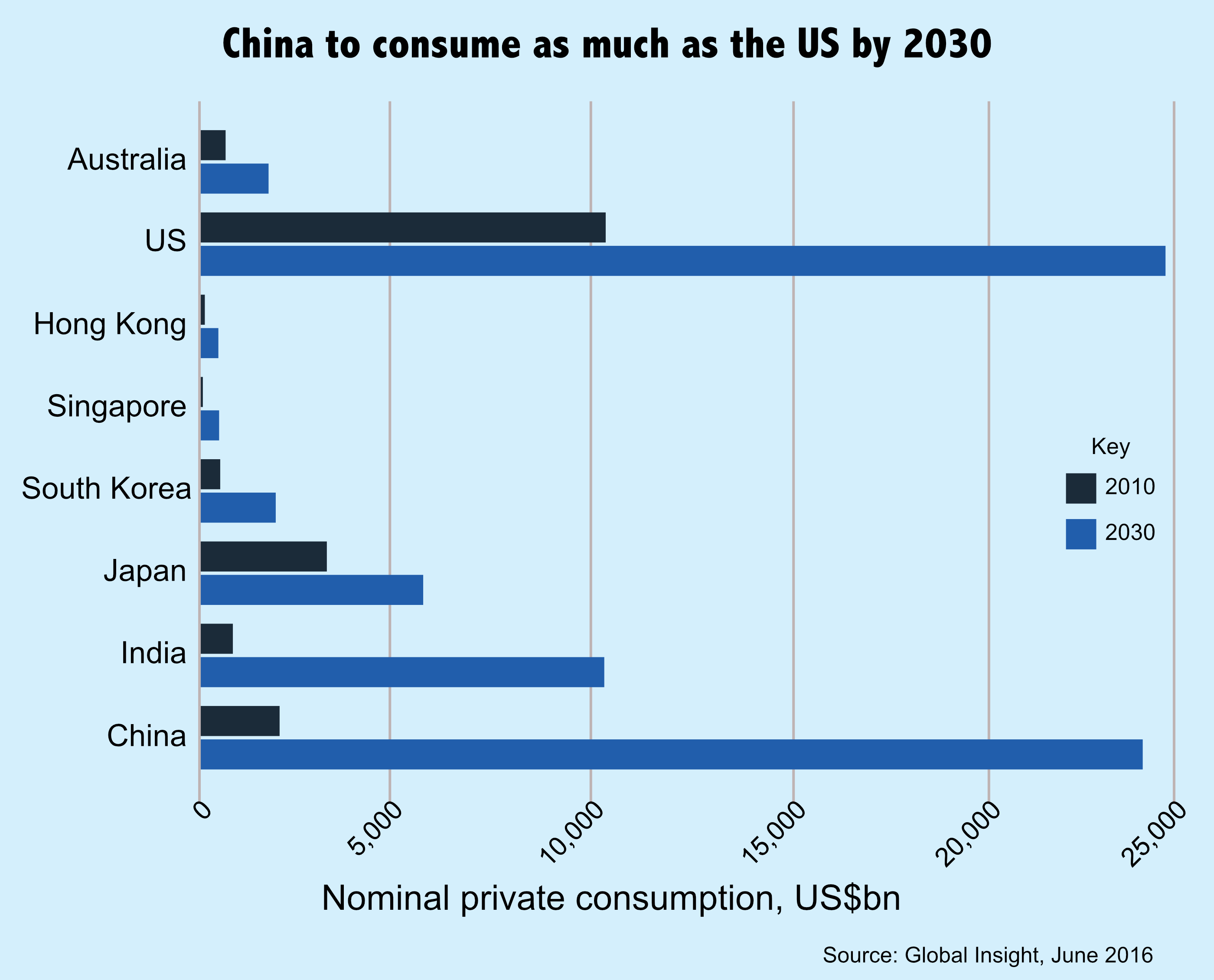Chinese consumers remain the world’s largest purchasers of luxury goods, but spending is mostly done overseas. With China’s plan to encourage more spending at home, analysts say the rise of luxury outlets could be the next big thing.
Market volatility and slowing global growth pose short-term headwinds for China, but the country’s middle class is already picking up the growth slack. Together with the nearly 20 million Chinese moving into cities every year — lifting the urbanization rate from 56% last year to around 65% by 2025 — the number of middle class households is also expected to grow by close to 150 million over the coming decade. Rising urban population, income and wealth is likely to continue to broaden and deepen the consumer base. By 2030, China is expected to consume as much as the US.
This bodes well for the luxury outlet sector, which is now well positioned for the future consumer landscape in China, says investment management firm TH Real Estate in a report.

The rise of the middle class and rapid urbanization have led to robust growth in disposable income. And due to aggressive mainland expansion by luxury brands in recent years, Chinese consumers have gained better brand consciousness. Yet, a vast majority of Chinese (as well as global) consumers remain price conscious — comparing prices and buying from stores that offer the best value. As discretionary spending continues to grow with middle class aspiration and brand awareness, a big household savings pool and relatively low debt will continue to drive purchasing power and luxury spending.
“Strong appetite for luxury goods, but sensitivity to pricing suggests that outlet malls are likely to continue to draw in a large pool of discount-seeking luxury consumers in China,” says TH Real Estate.
The government efforts to lure consumers to spend domestically is also helping boost the case for luxury outlets. The government, for one, is looking to introduce more luxury brands and franchises into China to boost spending.
Recently, it introduced a new tax regime for cross-border commerce purchases that could narrow the price differential of luxury goods between China and there rest of the world, says the report.
According to the new rules, retail goods purchased online will no longer be treated as personal postal articles but as imported goods, which carry tariffs, import value-added tax and consumption tax.
In the long run, the lion’s share of luxury sales lies within China. Shopping in a brand’s place of origin has allowed Chinese travellers to learn more about the history and value of the brand, which in turn has not only raised brand awareness and desire, but also helped in the development of the Chinese luxury market. The Chinese government has also stepped in to tackle Daigou by lowering import tariffs and tightening customs controls. All these factors should enhance the appeal of domestic shopping. Daiguo is a channel of commerce in which a Chinese person overseas purchase commodity for a customer in mainland China to take advantage of cheaper prices offered abroad.
Designer outlets have been one of the strongest performing real estate sectors over the past decade, even thriving during periods of economic downturn. Typically, outlet malls are single storey, village-style retail centres, selling goods at a 30-70% discount. A few major players typically own and manage the better schemes alongside a larger group of single or small portfolio owners. This specialist segment of the retail market has earned great popularity in recent years — not only from conventional shoppers, but also from tourists. Some of the best schemes have been generating the strongest sales densities of any retail destination.
Retailers, enticed by the strong footfall and sales, are also increasingly including outlets in their portfolio strategy, the report notes. The sector is considered niche as an investment class, underpinned by very sound drivers of performance. Unlike other core real estate sectors, where market cycles have become more pronounced, designer outlets have proved to be relatively immune to cyclical economic and real estate market swings.
“Designer outlets, and the outlet malls that host them, are proving to be particularly well placed as middle class buyers are generally more price sensitive than the high-net-worth individuals who pioneered China’s luxury shopping habits. Finally, these middle class buyers are attracted to the ‘shopping experience’ of visiting attractively designed outlet malls as a day trip.” says Chris Reilly, managing director, Asia Pacific of TH Real Estate.









